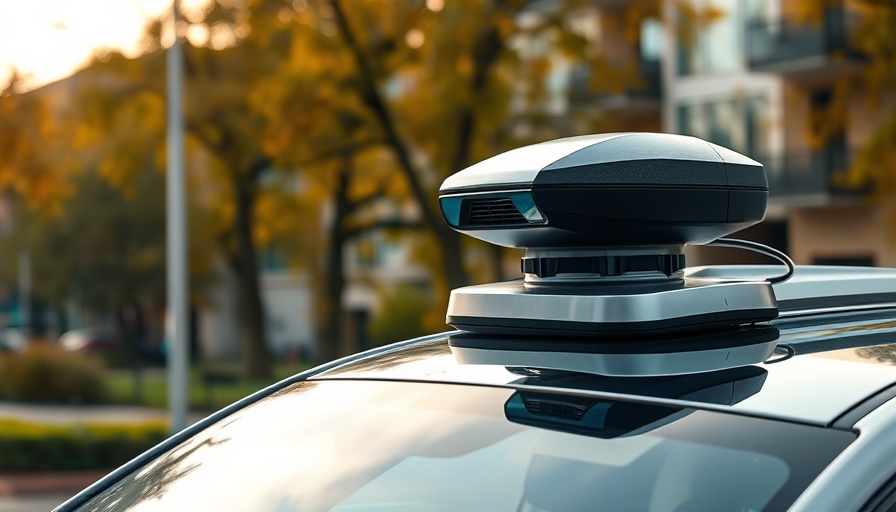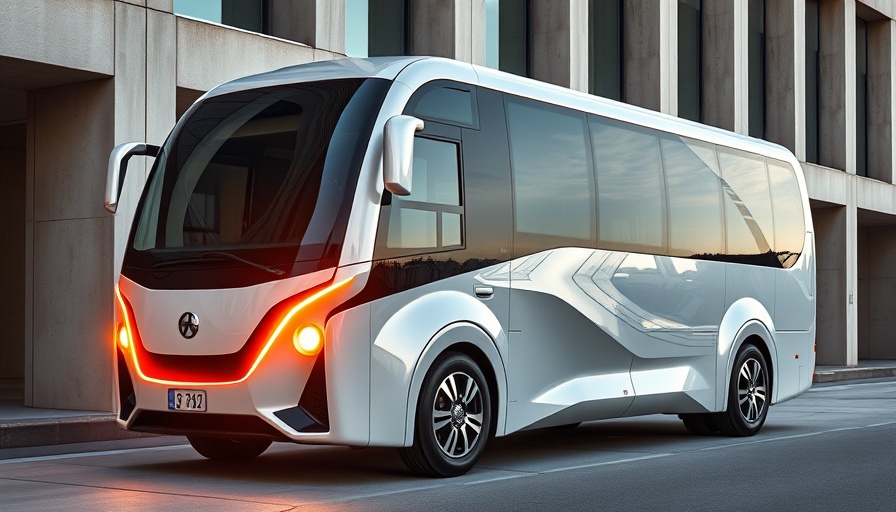
Lyft Partners with Baidu to Make Robotaxis a Reality in Europe
In a significant move to redefine urban mobility, Lyft has announced a partnership with China's Baidu to launch robotaxi services across Europe by 2026. As the U.S. ride-hailing giant prepares to enter the European market with the help of Baidu's Apollo Go autonomous vehicles, industry observers are closely watching this trend, particularly as it promises to revolutionize how we think about transportation.
The Hybrid Network Approach: Innovations in Ride-Hailing
As Lyft CEO David Risher noted, the upcoming robotaxi service exemplifies the company's "hybrid network approach," which blends autonomous vehicles (AVs) with human drivers. This innovative strategy aims to offer riders flexible and customer-centric transportation solutions. Automotive technology is rapidly advancing, and Lyft's unique approach demonstrates how companies are adapting to integrate self-driving vehicles into their service offerings.
Significance of the European Expansion
Lyft has focused primarily on North America since its inception in 2012, but with and its recent acquisition of the German mobility app FREENOW, the company is poised to capture a share of the competitive European market. Unlike Uber, which has aggressively broadened its global reach, Lyft’s method appears more strategic, focusing on forming partnerships that align with their capabilities in automotive innovations and future trends.
Insights into Autonomous Vehicle Partnerships
Lyft and Uber have both shuttered their internal AV programs but are vying for partnerships with leading companies like Baidu to leverage developed technologies. With Uber recently forging multiple alliances, including investments in various self-driving and electric vehicle (EV) startups, the competition intensifies. Lyft’s slower pace doesn’t negate its ambition; partnerships with companies such as May Mobility and Benteler Group showcase its commitment to robotic advancements in transport.
Future Automotive Trends: What This Means for Consumers
The introduction of robotaxi services marks a pivotal shift not just in ride-hailing, but in overall future automotive trends. For consumers, the accessibility of AVs will likely promise greater convenience and potentially reduced costs. Moreover, as more autonomous shuttles and robotaxis enter the market, consumers can expect a more diversified transportation landscape.
The Road Ahead: Challenges and Opportunities
Implementing robotaxis in Europe is not without challenges. Regulatory hurdles must be navigated, and public perception regarding safety and reliability will play critical roles. Therefore, while Lyft employs its hybrid approach to combine human insight with technological advancements, it must simultaneously establish trust among riders about the shift towards autonomy. EV powertrains will likely influence the integration of these technologies as companies refine their operations.
Your Take on Robotaxis: Embracing Innovation
As Lyft and Baidu prepare to launch their robotaxi services in Europe, it leaves consumers with a significant question: are you ready to embrace the automation of transportation? With the evolution of ride services and the integration of AVs, many may find the new alternatives are not only practical but also transformative. The future of urban mobility is on the brink of evolution, blending technology with convenience, and it's up to consumers to adapt and drive discussions about how these changes impact daily life.
 Add Row
Add Row  Add
Add 




Write A Comment